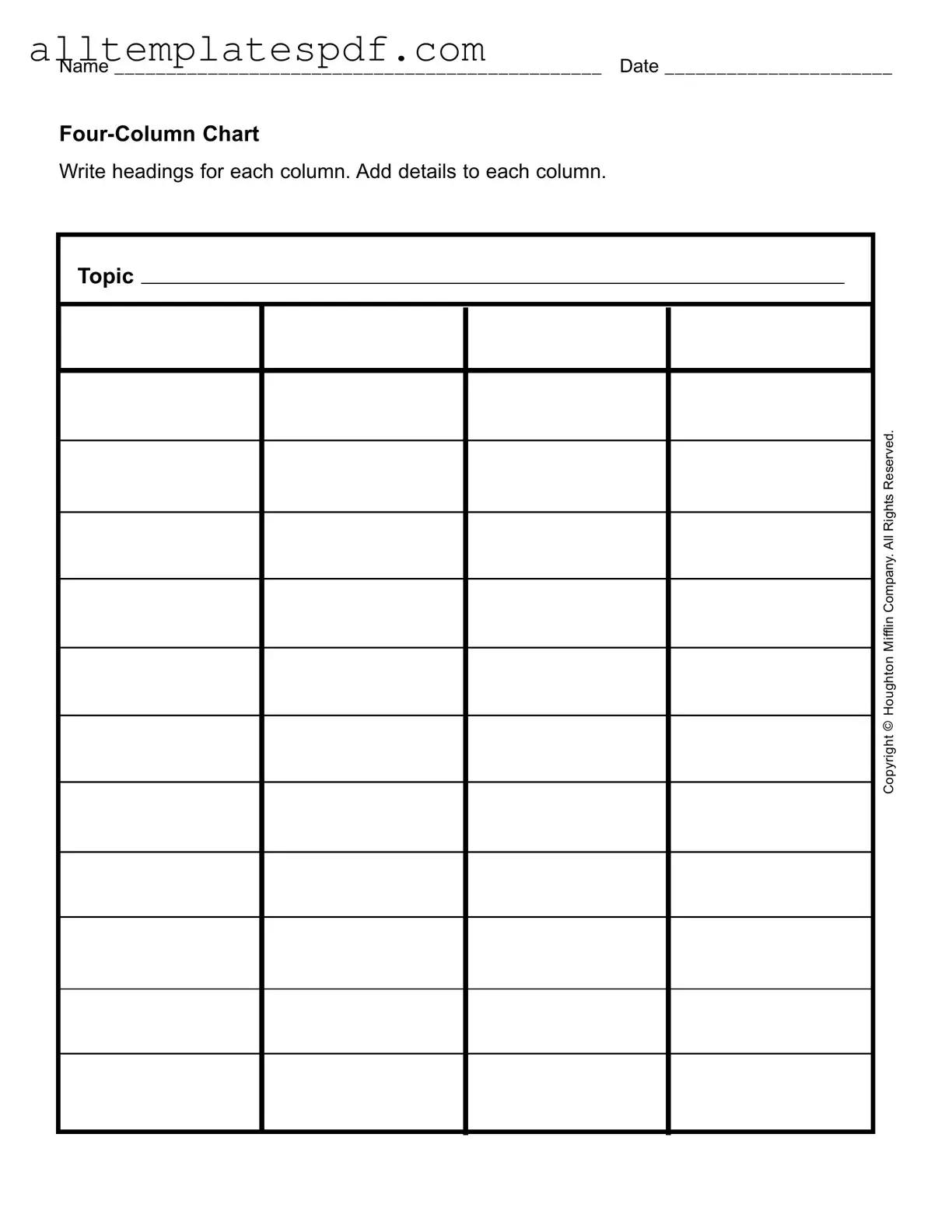When filling out the Four Column Chart form, many individuals encounter common pitfalls that can lead to incomplete or inaccurate submissions. One frequent mistake is neglecting to clearly label each column with appropriate headings. Without clear headings, it becomes challenging for others to understand the information being presented.
Another common error is not providing enough detail in each column. While brevity is important, omitting essential information can result in a lack of clarity. Each column should contain relevant details that effectively convey the intended message.
Inconsistent formatting is also a problem. Some people may use different fonts, sizes, or styles within the same chart. This inconsistency can make the chart visually confusing and detract from its overall professionalism.
Failing to proofread the content is a mistake that can have significant consequences. Typos and grammatical errors can undermine the credibility of the information presented. Taking the time to review the content helps ensure accuracy and clarity.
Additionally, many people overlook the importance of organizing information logically. If details are scattered without a clear flow, it can make the chart difficult to follow. A well-organized chart enhances comprehension and allows for easier analysis.
Some individuals may also forget to include a date on the form. A date is crucial for context and reference, especially if the information is time-sensitive. Leaving this blank can lead to confusion down the line.
Another mistake is not using enough space within each column. Cramming too much information into a small area can make it hard to read. It’s important to provide adequate spacing to ensure that each piece of information is easily digestible.
Many people fail to consider their audience when filling out the chart. Tailoring the information to the needs and understanding of the intended readers can significantly enhance the effectiveness of the chart.
Some may also neglect to include relevant examples or data that support the information in each column. Providing concrete examples can help clarify points and make the content more engaging.
Finally, forgetting to save a copy of the completed form can be detrimental. Without a saved version, individuals may lose their work or have to redo it entirely. Always ensure that a backup is available to prevent loss of information.
